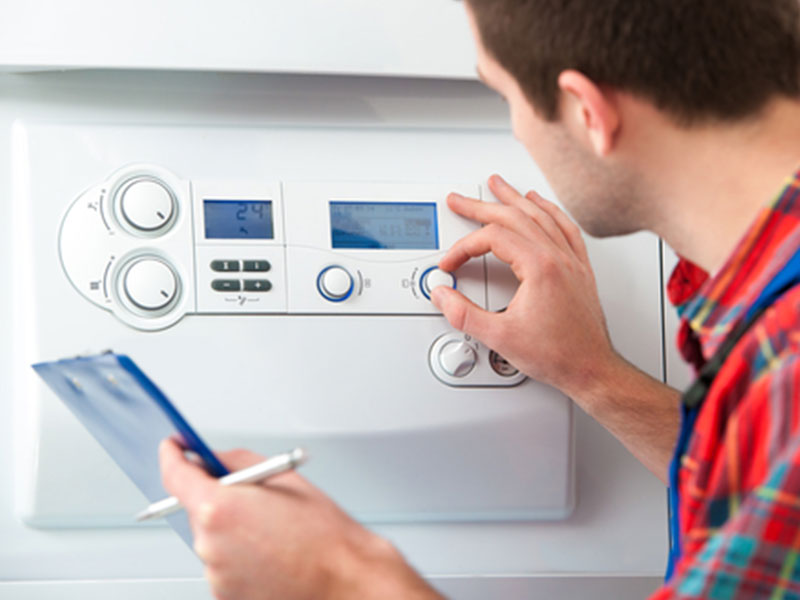
Heating Repairs in Warm Climates: 6 Common Problems We See Every Winter

Robbinsville winters may be milder than places farther north, but chilly nights, damp air, and coastal storms still push your heater to its limits. When your system falters, prompt heating repairs keep small problems from turning into breakdowns and keep your home comfortable in every room.
Heating Repairs In Robbinsville, NJ: Why Mild Winters Still Matter
“Warm” is relative. In central New Jersey, we see fall warm-ups followed by sharp cold snaps, nor'easter moisture, and long stretches in the 30s. That on-and-off pattern causes frequent starts and stops, which add wear to igniters, sensors, blower motors, and heat pump controls.
Homes around Robbinsville Town Center, Foxmoor, and Windsor often have additions or finished basements. Those changes can restrict airflow, create pressure imbalances, and expose hidden duct leaks. The result is uneven rooms and short cycling that seems random until a tech measures static pressure and temperature rise.
The 6 Most Common Heating Problems We See Every Winter
1) Dirty Flame Sensor Or Worn Igniter
Gas furnaces rely on a clean flame sensor and a healthy hot-surface igniter or spark igniter to light consistently. In our area, long spring and fall idle periods let light oxidation build up, so the first real cold spell exposes the issue. You might notice the burners light briefly, shut off, then try again in a loop. That false-start cycle stresses other parts and leaves your home cooler than the thermostat setpoint.
Beyond comfort, repeated misfires waste fuel and can trip safety locks. A professional will check microamp readings at the sensor, verify ground, and test igniter resistance to confirm the root cause rather than guessing.
2) Clogged Return Or Filter Restricting Airflow
Even in mild winters, airflow problems are a top reason for no-heat calls. Tight return closets in townhomes and furniture placed over returns in living rooms can choke the system. When airflow drops, the furnace overheats and shuts down to protect itself, or a heat pump struggles and runs longer than usual. That creates uneven rooms and higher energy use.
During a tune-up, a tech checks filter fit, measures static pressure, and confirms that return and supply paths match the system's design. The goal is safe temperature rise and reliable airflow, not just a quick reset that hides the problem.
3) Heat Pump Defrost Hiccups In Damp Cold
Many Robbinsville homes rely on heat pumps for the bulk of the season. On damp 30 to 40 degree days, frost forms easily on the outdoor coil. The system should switch into defrost for short periods, but a weak sensor, stuck reversing valve, or low refrigerant can make defrost too frequent or not frequent enough. Either way, comfort drops and the auxiliary heat runs more than it should.
Because our winters swing between cool and cold, these issues show up off and on, which makes them tricky. A pro will verify sensor values, reversing valve operation, and charge against manufacturer specs under local conditions.
4) Thermostat Misreads And Control Glitches
Thermostats mounted on exterior walls or near kitchen archways may read warmer than the rest of the house. In mild weather, that small misread is enough to short cycle the system. We also see control boards that experienced brief power dips during storms in Hamilton Township or East Windsor. After a flicker, the board may log faults, and the unit becomes unreliable.
Proper diagnosis means checking thermostat placement, confirming staging and heat pump balance points, and reviewing fault history. That prevents the common trap of replacing a part that was never the problem.
5) Condensate Drain Issues On High-Efficiency Furnaces
High-efficiency furnaces create condensate that must drain away. Long horizontal runs, uninsulated lines in cool basements, or algae in a trap can trigger pressure switches and shut the furnace down. In Robbinsville's shoulder seasons, the furnace may run just enough to make condensate but not enough to keep the drain warm, which makes intermittent problems more likely.
Technicians clear and re-prime traps, check slope, and verify switch operation. They also look for subtle venting issues that mimic drain faults so you get a lasting fix.
6) Blower Motor Or Capacitor Fatigue
Stop-and-start cycles in milder winters wear on blower components. A weak capacitor or ECM motor fault shows up as reduced airflow, hot supply air that cools quickly, and noisy starts. It may seem fine in the afternoon and fail after sundown when the house actually needs steady heat.
Testing capacitance, motor amperage, and programming confirms whether repair or replacement is the right move. Keeping airflow within the manufacturer's range protects the heat exchanger and helps every room feel even.
Safety note: any fuel-burning appliance can produce carbon monoxide if it's not venting correctly. If your CO alarm sounds or you smell gas, leave your home, call 911, and contact Steele Mechanical, LLC once you're safe.
What You Might Notice At Home
Most homeowners describe the same patterns before a no-heat call. If these sound familiar, it's time for a professional to check your system under load and in real weather, not just at idle.
- Rooms near exterior walls in Windsor or Town Center feel cool while interior rooms are warm.
- The furnace lights, clicks, and shuts off, then tries again a few minutes later.
- Your heat pump seems to “whoosh” into defrost too often on damp days.
- There's a light burning or metallic smell at startup that does not go away.
- Thermostat shows setpoint reached, but supply vents blow lukewarm air.
Never ignore a persistent burning smell or repeated tripping of breakers. Those signs point to conditions that need immediate attention from a trained technician.
Why These Problems Are So Common In Mild Winters
Mild seasons don't eliminate wear. They shift it. Instead of long, steady run times, your system experiences shorter cycles and frequent restarts. Motors and igniters see more starts, flame sensors oxidize during long idle stretches, and damp air makes outdoor coils frost faster. When a cold front moves in overnight, the system that seemed “okay” at 48 degrees struggles at 28.
Homes with additions or finished basements in Foxmoor and Robbinsville Town Center often have ductwork that was squeezed into tight spaces. That raises static pressure, starves the blower, and accelerates heat-related shutdowns. A pro measures, documents, and corrects the causes so the fix lasts.
How Professional Maintenance Helps In Mild Climates
Good maintenance is less about a checklist and more about catching small shifts before they become big failures. In our climate, that means focusing on components stressed by cycling and moisture. Technicians clean flame sensors, verify igniter resistance, test safeties under real operating temperature, confirm condensate flow, and calibrate thermostat and staging.
They also document baseline readings like static pressure and temperature rise for your specific home. Those numbers become a reference point, making future troubleshooting faster and more accurate when the weather turns.
If you want seasonal insights and homeowner-friendly explanations, browse our hvac blog for short reads that explain what your system is doing on those up-and-down winter weeks.
When To Call A Pro In Robbinsville, NJ
Call when comfort changes suddenly, the furnace cycles without heating, or your heat pump turns to auxiliary heat more than usual. If your system was sized for deep cold but runs in short bursts during typical Robbinsville winter evenings, a tech can adjust airflow, balance staging, and stabilize temperature rise to protect components and restore comfort.
- If a storm caused power flickers and your system now shows fault codes.
- When you hear new noises at startup or feel airflow drop at multiple vents.
- Any time carbon monoxide alarms sound or you smell gas. Leave first, then call for help.
Working with a local hvac contractor who understands Mercer County weather helps you avoid repeat visits and guesswork. Steele Mechanical, LLC builds solutions around your home's layout and how your family actually uses each room.
A Note On Heat Pumps Versus Furnaces Here
Both systems work well in Robbinsville, but they fail in different ways during mild winters. Heat pumps need accurate defrost and charge to handle damp air efficiently. Furnaces need clean ignition and proper airflow so they do not overheat and shut down. Many homes use both, with the furnace set as backup. Correct balance points and staging prevent tug-of-war and keep bills in check while staying comfortable.
Ready For Fast Help In Robbinsville?
Whether you live near Town Center, along Route 130, or on a quiet cul-de-sac, reliable heat matters when the temperature drops after sunset. A thorough diagnostic visit catches the true cause, not just the symptom, so you get steady, even warmth without the surprises.
Need service now? Schedule expert heating repairs with Steele Mechanical, LLC and get your home comfortable again. Prefer to talk to a person? Call 609-259-3210 and we'll take care of you today.
When you want a second opinion or a deeper explanation of what we found, our technicians are happy to walk you through the readings and what they mean for your home. That way, you can choose the repair path that fits your comfort goals with confidence.